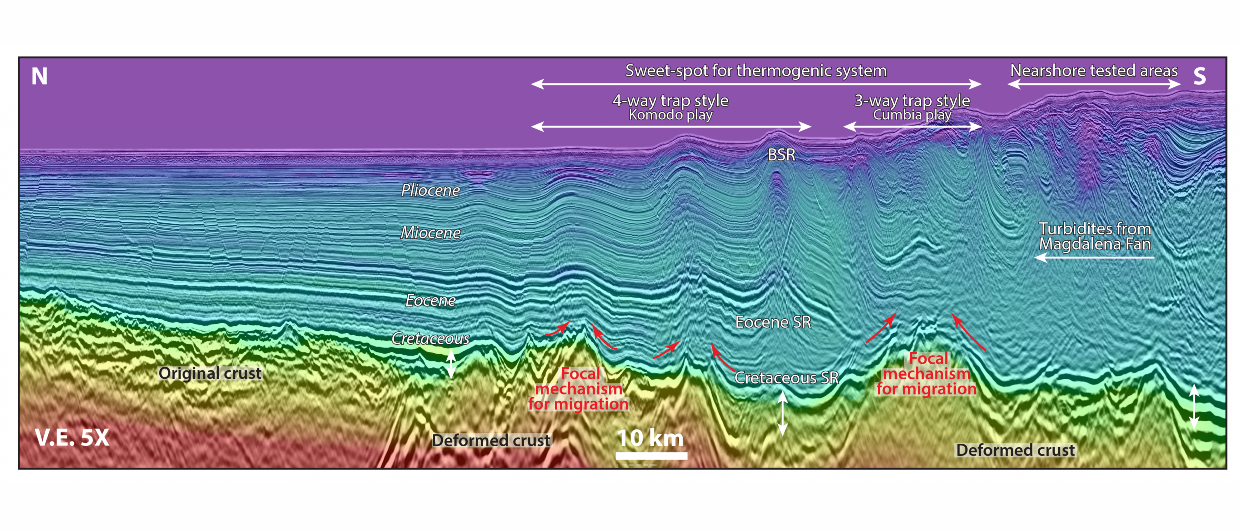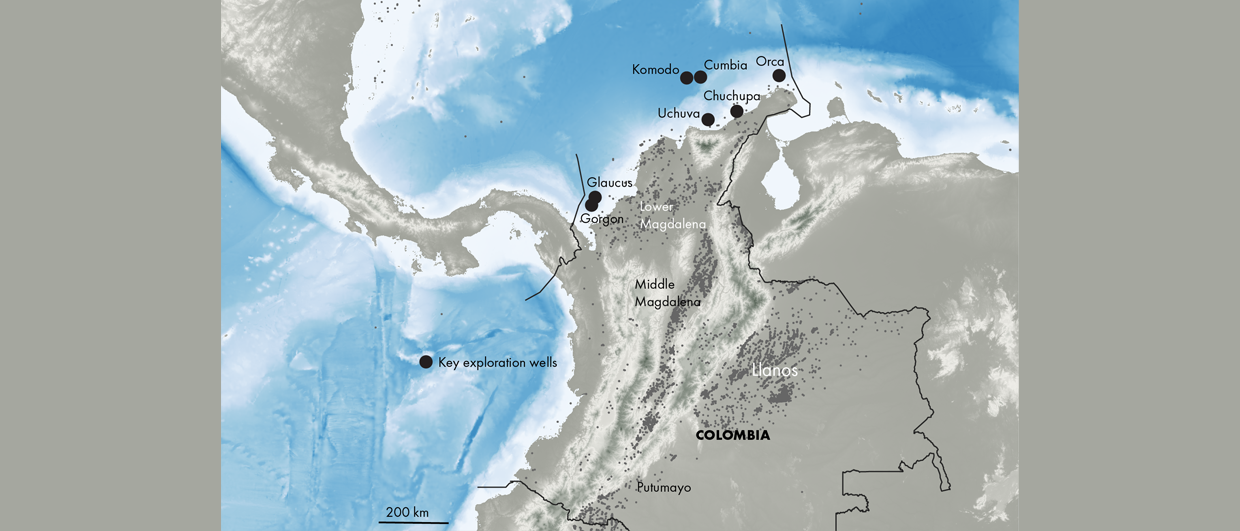“You’ll be hard-pressed not to find gas out there”, was Joshua Turner’s response on LinkedIn to the news of Petrobras’ reported success drilling the Uchuva-2 appraisal well. The area where the well was drilled is known as a biogenic gas province, which probably explains his comment. The well was not drilled too far from the first offshore gas discovery made in Colombia – Chuchupa-1, completed in 1979, which opened the biogenic gas play for the country.
In that sense, the statement from Petrobras that the well is “in line with the company’s long-term strategy, aimed at replenishing oil and gas reserves through the exploration of new frontiers” is maybe a little far-fetched, as it is unlikely that it tested an entirely new play.
Read also: Natural Gas: The best ally for Colombia’s energy transition
The real frontier well has yet to be spudded, and that is the record-breaking Komodo-1 exploration well in approximately 3,950 m of water. And in contrast to the biogenic gas play that is characteristic for the “shallower” shelf, Komodo will be drilled in an area without any legacy well control. However, as Luis Carlos Carvajal-Arenas and co-authors pointed out in a recent GEO EXPRO article, the prospect is characterised by a double flat spot and a class 3-AVO anomaly which is conformable with structure, so there are some positive indications for the presence of hydrocarbons.
A SHORTFALL
“There is optimism over the potential of Colombia’s Caribbean Sea”, writes Welligence in their LinkedIn post about the Uchuva-2 well when it was spudded. “It’s a long-term opportunity – the country is facing near-to-medium term supply shortfalls that have already led to increased LNG imports”, according to the upstream industry intelligence company.
What type of hydrocarbons will be found though is a matter of debate. Again pointed out by Luis Carlos and co-authors in their article, recent findings at the Orca and Orca-Norte wells may point to the presence of a thermogenic petroleum system in the area as well. They write that in an interview, top-executives at Ecopetrol stated that the Orca Norte-1 well is a gas discovery with a different composition than what was found at Orca-1. More importantly, it was confirmed that the Orca well not only encountered gas, but also instances of heavy oils and crude oils.
This follows on from more indications for the presence of a thermogenic petroleum system as suggested by piston core studies, oil slicks and condensate fluids derived from early production from the Chuchupa well amongst others.
Taking this all into account, the authors included all previous observations and proposed a thermogenic hydrocarbon system for the Colombian Basin with mature Cretaceous (?) source rocks – this area is indicated on the map above. Let the Komodo well start!



